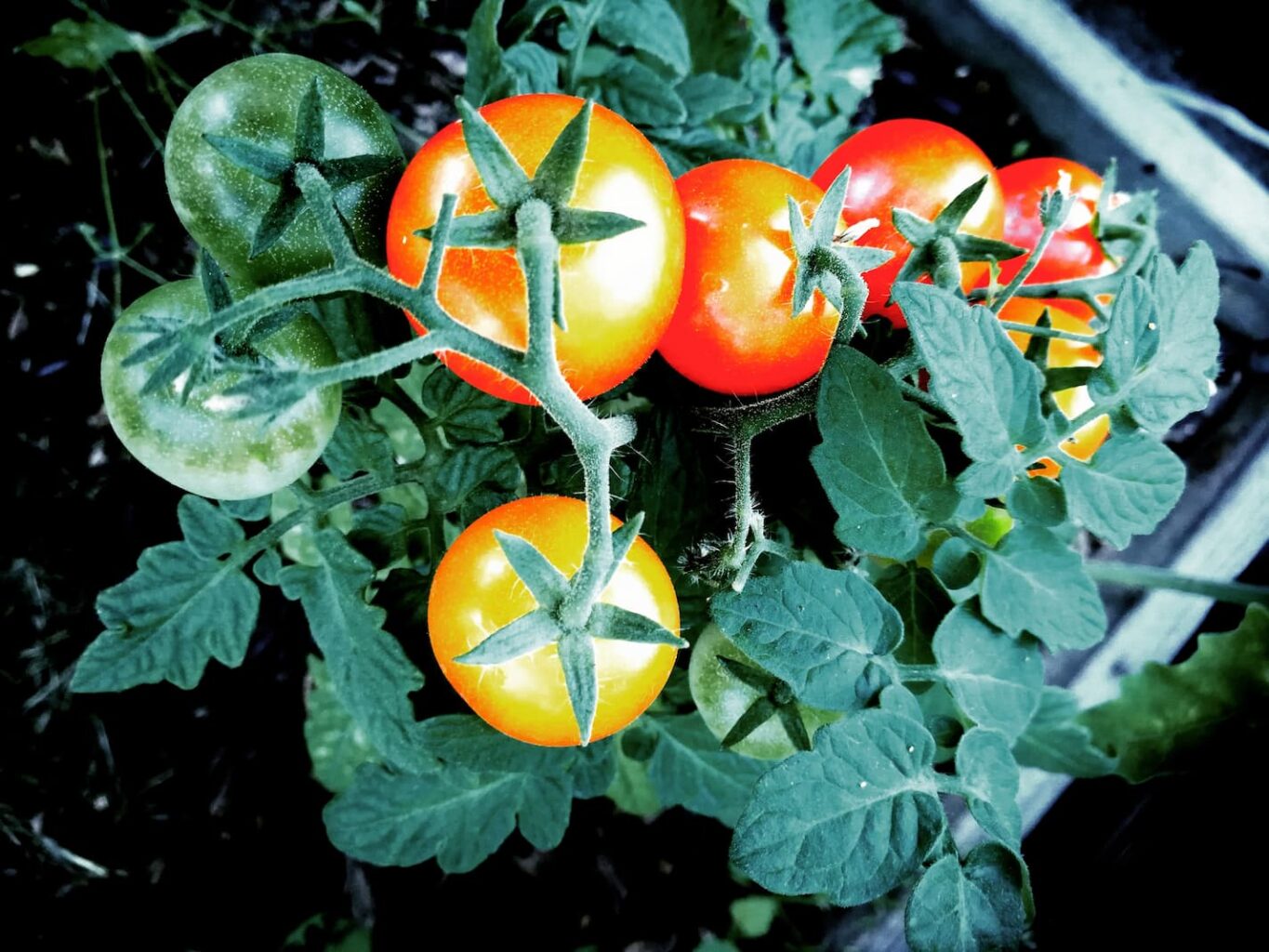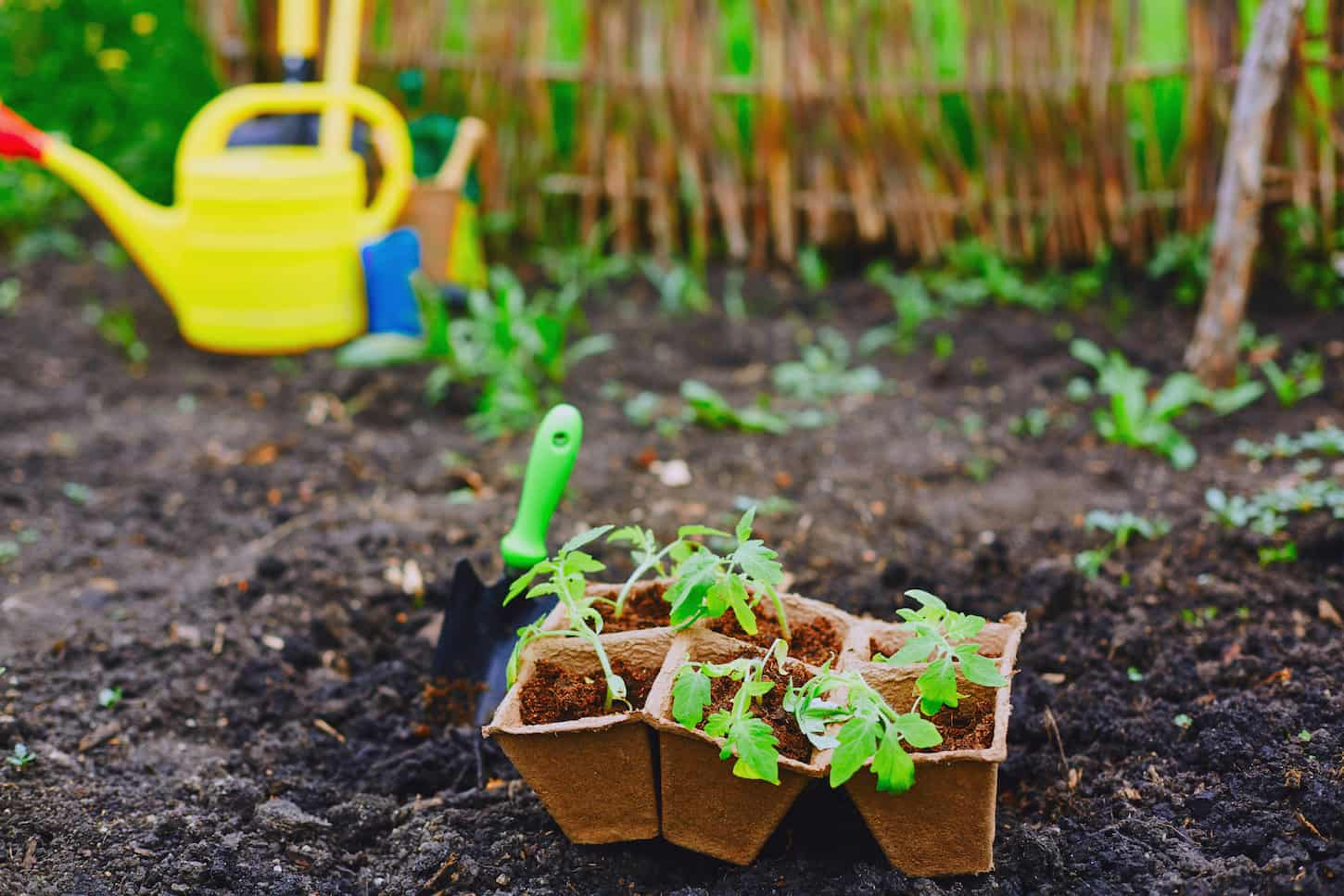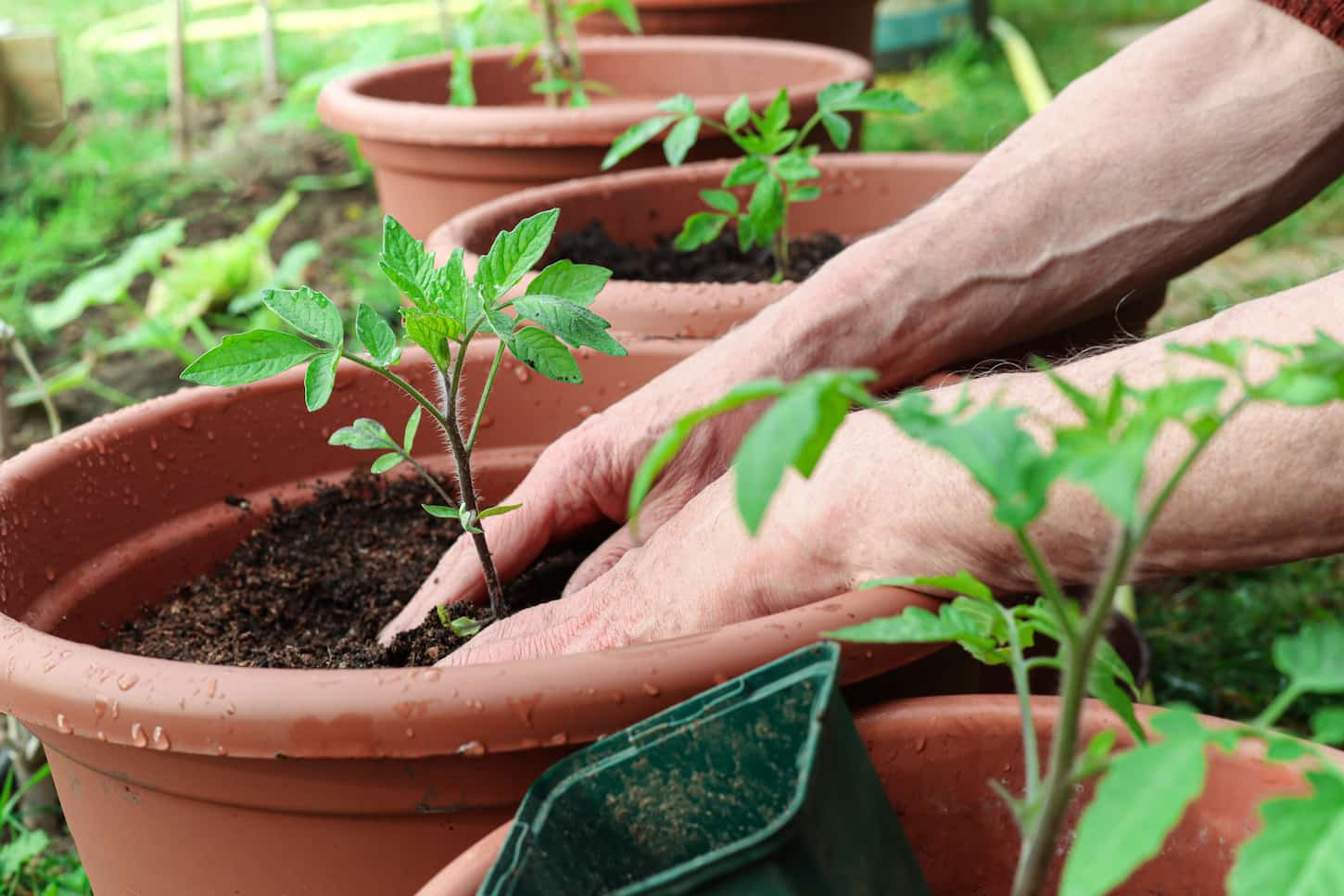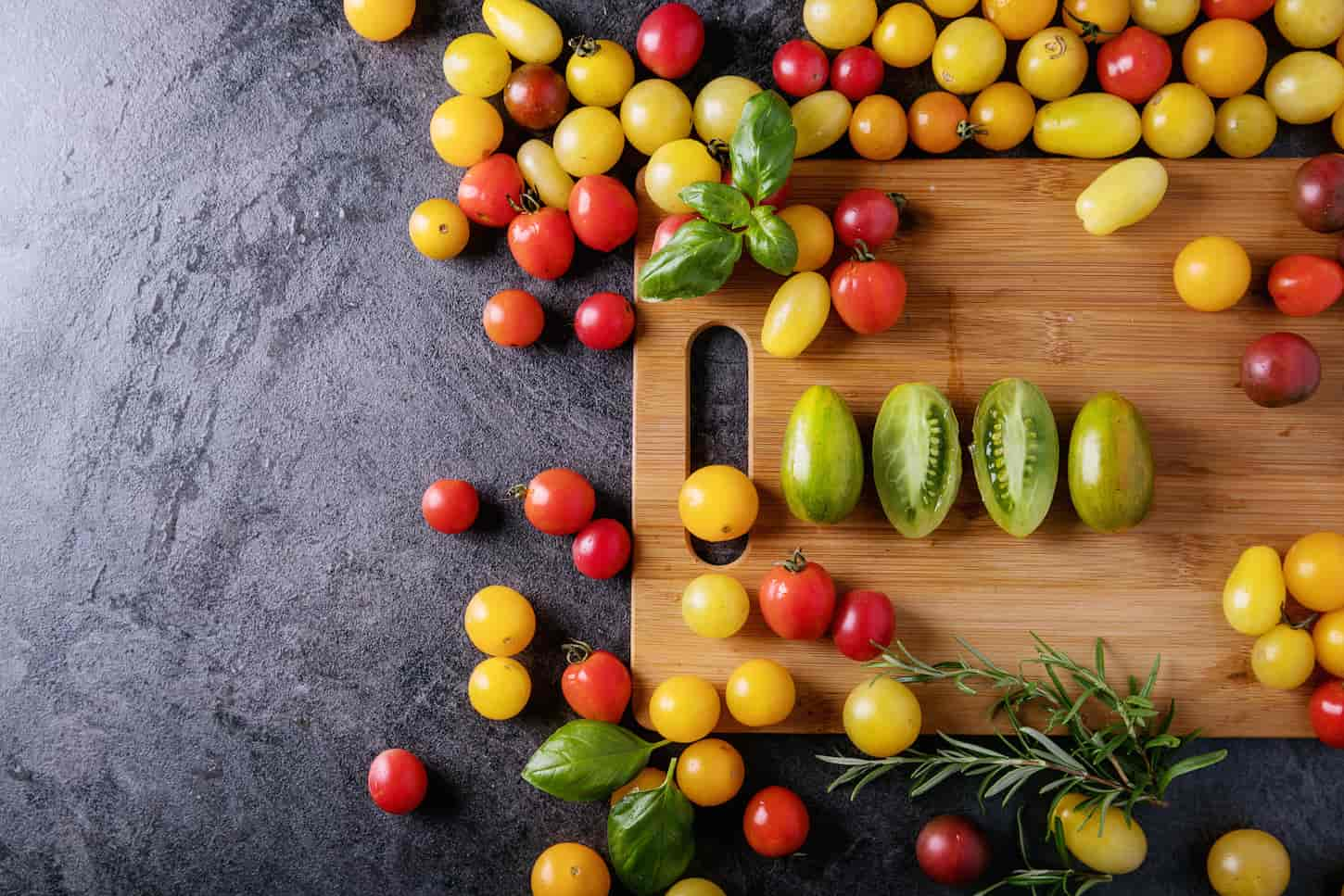If you have a vegetable patch, you already know that many of its plans need direct sunlight to grow. Tomatoes are no different, and they thrive when they receive enough sunlight, water, and nutrition elements from the soil. But how much sunlight do tomatoes need, and can they grow in less or indirect sunlight?
Tomatoes in indirect sunlight may need to grow lights or a mechanism to get them in direct sunlight. Tomatoes require full sun (6 to 8 hours) of direct sunlight to best produce fruit. Tomatoes with less sunlight will have a diminished harvest unless augmented with artificial light.
However, we are not that lucky to have a sunny garden. Probably you have wondered then if tomatoes can grow in the shades, and the answer is that it depends on various factors. Keep reading to find out how you can grow your tomatoes even without direct sunlight.

How Much Sunlight Do Tomatoes Require?
Tomatoes require 6 to 8 hours of sunlight every day, which is also known as “full sun.” Tomatoes that don’t get a full 6 to 8 hours of sunlight won’t grow as well or have as good of a harvest as those tomatoes grown in full sun.
Sunlight is vital for tomatoes to thrive. Whether you are growing cherry tomatoes for salad or another type for your pasta sauces, all sorts of tomatoes will grow bigger and become tastier if there is enough light.
Tomatoes take between 60 to 100 days from seed to harvest, and they love to be under the sunlight for 6 to 8 hours a day. Of course, more sun will never hurt.
They also appreciate slightly acidic soil with a pH of 6.0 up to 6.8. If any of those factors is missing or not at their optimal quantity, your tomatoes might take more time to grow or not be very juicy and tasty.
The reason tomatoes need so much sunlight is that they are converting it into the energy they need to grow their fruits. Therefore, they will produce more fruits if they receive more direct exposure. The fruit itself doesn’t need sunlight to ripen since they need only ethylene gas and heat to do so.
The general conclusion is that if your tomatoes are exposed to the sun all day long, they will grow faster and have more energy. That energy will be used for growing fruits, and you will have a better harvest.
However, too much sun or too much heat can scorch the leaves and fruit. So, if you plan to grow tomatoes in an area of your garden that gets 12-plus hours of sun every day, rethink that plan. Or make use of taller plants to shade your tomatoes later in the afternoon.
The effects of the different levels of sunlight on tomatoes
The time of day when your tomatoes receive sunlight is also essential.
- The morning sunlight will be higher intensity, and it won’t heat them or sunburn them as much as midday and afternoon sunlight can.
- Midday and afternoon lights will be hotter than morning lights, and it might be even too intense for your tomatoes.
- Late afternoon light can still be quite hot, and this can be a great time to let other plants shade your tomatoes after they got their full sunlight requirements already.
Of course, how heated the sun’s rays are depended on your location. But in general, if your plans are exposed to the sun at this time of the day, they might need even more watering. If your plant can be shaded at this time of the day, it will be the best.
If you can plan your garden so that your tomatoes get a good mix of full sun (split between the morning and the late afternoon) then that’s awesome. That way, the tomatoes won’t get the strong, midday scorching sun, or be at risk of sunburn. They’ll still get enough sunlight, though.

Can Tomatoes Get Too Much Sunlight?
Tomatoes can get too much sunlight, leading to sunburned fruit and leaves. Scorched leaves dry up, while sunburned fruit can be a different shade of color than the rest of the fruit.
Like many plants, a tomato can burn and become very dry if they receive too much sunlight. This might end up with not bearing any fruits or the plant dying. This is why it is better to shade your plants when the sun is too intense in the middle of the day.
When the plants are exposed to too much sunlight, it might lead to the soil losing its moisture faster than what the plant needs. And even though the tomato will have enough energy to produce the fruit, not having enough water in the soil can slow down or stop the growing process.
Sunscald is a risk that should be taken into consideration as well. Especially young tomato plants might suffer from it and lose their leaves and not produce fruits. Or even if they bear fruits, they will tend to rot quickly.
Don’t forget to ensure that your tomatoes receive the right amount of water depending on how much and when they are exposed to the sun. Don’t give them too little, or they might get dry, but also don’t give them too much water because it might lead to the plant and fruit rotting.
What Happens if Tomatoes Don’t Get Enough Sun?
Tomatoes that don’t get enough sunlight will not grow large, nor will they produce a lot of fruit at harvest time. The tomato plant may also wilt, become diseased, or die if there is insufficient sunlight, or if insufficient sunlight affects the soil quality.
Tomatoes grow fast, and they can double their mass every two weeks when they are receiving all they need— including enough sunlight. So, if they are not receiving enough direct sunlight(a minimum of 6 hours a day) they won’t have enough energy to grow many tomatoes come harvest time.
Also, even though the fruit itself doesn’t need direct sun exposure, if the tomato plant is not receiving enough to be healthy, that will affect the fruit’s growth. They will remain smaller and not so juicy and tasty as you might like them to be.
If the plant is also not getting enough sunlight to dry the soil, then watering schedules will need to be adjusted so that the plant doesn’t get root rot or other fungi that can grow when there’s too much dark and wet (fungi love that!).

Can Tomatoes Still Grow in the Shade?
Tomatoes can grow slower in the shade, but they won’t produce as much fruit if any at all. For tomatoes to grow well in the shade, they will require augmentation with artificial light.
The sunlight that your plant gets doesn’t have to be consecutive hours. So, if it gets a couple of hours in the morning and then a couple of hours in the afternoon, maybe it will get the required amount of exposure at the end.
So, if your plants receive some light during the day, they can still grow in the shade or without direct sunlight. In some cases, tomatoes can ripen faster without direct sun exposure.
Placing your tomatoes in a position where they can be both in the sun from time to time and in the shades might be even better.
Be careful not to over-water your tomatoes if you are not growing them under direct sunlight.
When a tomato plant is under the shade most of the time, it usually does not need as much watering as a plant in the full sun does. The sunlight isn’t there to dry the soil out as much, so your tomato is more at-risk of overwatering and related fungi issues than anything else.
Tomatoes grown in the shade are also more susceptible to diseases. Fungi and other diseases like things damper, so be careful with the watering.

How To Grow Tomatoes Without Enough Sunlight
Growing tomatoes without enough sunlight require light augmentation, enough nutrients, healthy soil, and sufficient water. The most common way to augment light is with grow lights, picking shade-tolerating tomato varieties, or by using a mechanism to bring light to the tomato plants.
Artificial sunlight via grow lights is the more common way to do things. This is something that many hobby gardeners are doing when they have small vegetable gardens or are growing their plans inside.
The effect of artificial light is not as good as grow lights, which are almost as good as natural sunlight, but it is better than nothing. But if you are going to use lights for your plants, get grow lights. They can still work as regular light bulbs, while regular light bulbs don’t work great for growing plants.
When you are planting your tomatoes, and you know they might not get enough direct exposure, make sure you are not planting or putting them too close to each other. That way, each of the plants will be able to get enough sunlight, airflow, nutrients, and water from the soil around it.
It might take longer to grow your tomatoes without direct sunlight, but it is still possible to do so. If your garden area is shady, your best bet is going to be to pick a shade-tolerating tomato variety.
Usually, those sorts are the ones bearing small to medium-sized fruits and are more resistant to any diseases.
Tomato varieties that tolerate some shade
There are a couple of sorts of tomatoes that grow better in the shade than others. Here are a few of them.
- Cherry tomatoes. Perfect for even growing indoors (like in an apartment) or in some shade. They bear fruit relatively fast, too.
- Plum tomatoes. Perfect for cooking, as they are juicy and delicious. They take longer than others to grow but are pretty adaptive even with less sunlight.
- German heirloom ‘Blondkopfchen tomatoes. Yellow tomatoes can generally get by less sunlight exposure than their red-fruited cousins.
- Black cherry tomatoes. This is one of the most resistant tomato types, which is why it is the perfect choice for small gardens that don’t have optimal conditions.
If you’d rather stick to full-sized tomatoes, here are a few of the better-known varieties you should go for.
- Beauty
- Bonny Best
- Gold Medal
- Hillbilly
- Roma
However, if you’re wanting to grow some of the heritage varieties, then make sure you plant them in full sunlight.
These are some varieties to get you started. Always grow some and test to see how they perform for you.

Can Tomatoes Grow Without Any Sunlight?
Tomatoes cannot grow without any light, though they can grow purely under artificial grow lights (without any sunlight). Tomatoes need at least a few hours of sunlight (or artificial light) every day, or they will die.
Even if you provide your plant with the most fertile soil, and a lot of water, and cover all other requirements to have tasty tomatoes, it is still not going to be enough. Your plant will need to receive light from somewhere to convert it into the energy needed to grow a harvest.
Next Steps
A tomato plant can grow with both direct and indirect sunlight. Of course, like most plants, it will thrive more if it gets adequate sun exposure.
Without being exposed for at least 6 hours daily, then your tomato might develop an energy deficiency, and it won’t bear a good harvest. If you provide it with more nutrients through the soil and artificial light to compensate, then you will still be able to enjoy tasty tomatoes in your salad or any other meal.
Now that you know more about growing tomatoes in less-than-ideal sunlight conditions, go read one of these two articles next.
- Can Eggplants Be Planted Deep Like Tomatoes? (Find Out!) That way, you’ll be totally ready for making some of the best eggplant parmigiana ever.
- Or if eggplant isn’t your thing, then go read this next: How To Harvest Lettuce Without Killing The Plant (Complete Process).
Resources
Learning from your own experience is essential, but learning from others is also intelligent. These are the sources used in this article and our research to be more informed as homesteaders.
- “Growing Tomatoes in Home Gardens.” University of Minnesota Extension, extension.umn.edu/vegetables/growing-tomatoes. Accessed 30 Dec. 2021.
- “Will Tomatoes Grow in Shade?” Gardening Channel, 5 May 2021, www.gardeningchannel.com/will-tomatoes-grow-in-shade.
